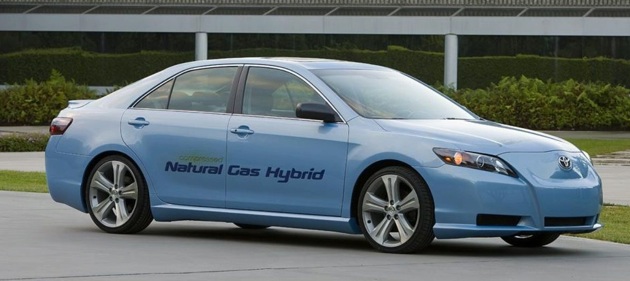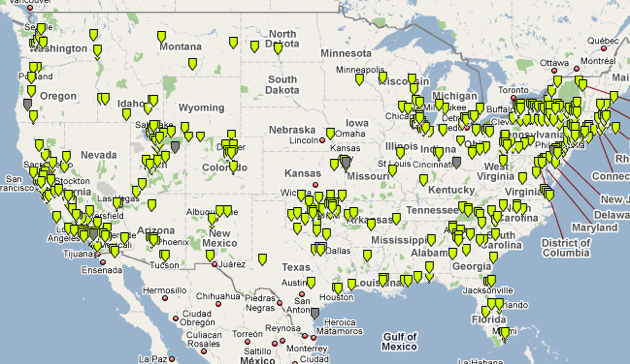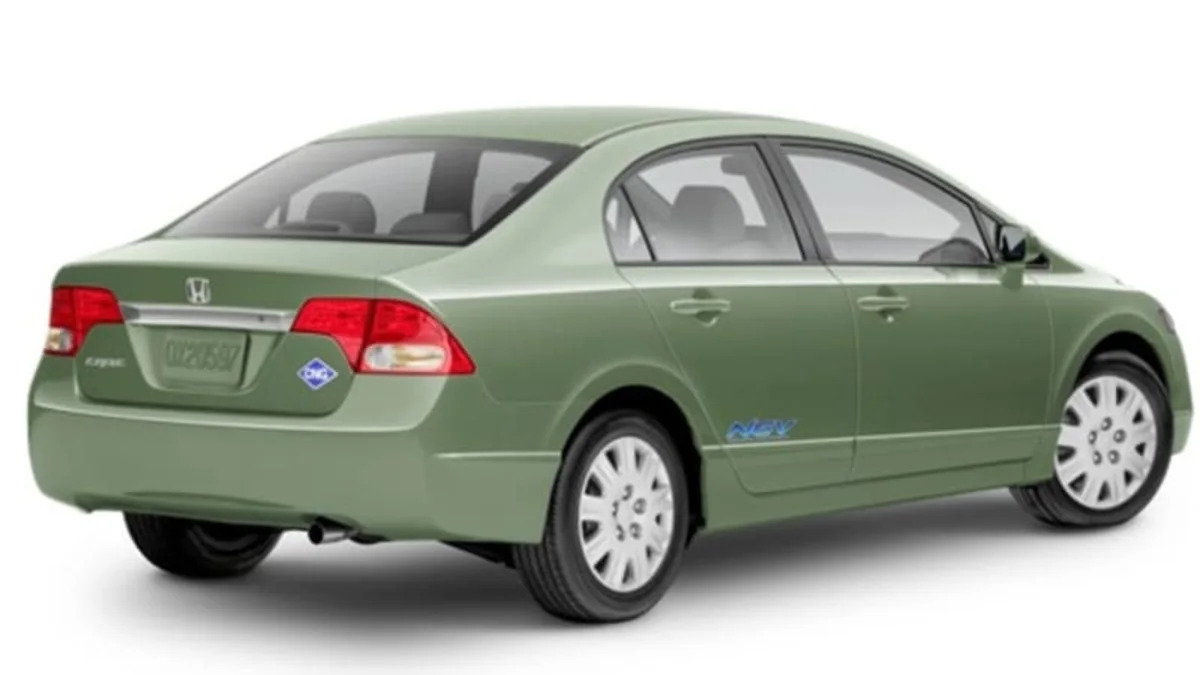2009 Honda Civic GX
 One thing we try to do with our weekly series of Greenlings articles is answer reader questions about the green car industry (if you've got a burning need to know something, please let us know). Considering today's news that the Honda Civic GX is now available for sale in Utah, we thought we'd dig into AutoblogGreen reader Island Don's question about compressed natural gas vehicles. Here it is (slightly edited):
One thing we try to do with our weekly series of Greenlings articles is answer reader questions about the green car industry (if you've got a burning need to know something, please let us know). Considering today's news that the Honda Civic GX is now available for sale in Utah, we thought we'd dig into AutoblogGreen reader Island Don's question about compressed natural gas vehicles. Here it is (slightly edited):
Follow us through the jump for the answer.To me as a big diesel guy, I see the the CNG as a great, cheap, clean burning alternative to to gas, diesel, or hybrid, yet Honda CNG sales aren't great. Why haven't they done better? Why haven't they been promoted by the government or the manufacturer? I've never seen an ad, nor ever heard any politician promote them. Yet I see all the buses in LA and San Diego running on CNG. That tells me there's an infrastructure in place. What's the scoop?
Back in April, we took a Greenlings look at CNG vehicles, and we'll assume you've read that primer about the basics and try to look at the broader CNG picture in this issue (if not – go do it).
CNG-powered vehicles are certainly the invisible children of the green car scene in the U.S. While there are nearly 10 million natural gas vehicles in the world – here are a few examples from India, Germany and France – they're not common on American roads. Still, Island Don is right when he says that buses (and other large vehicles) do burn the fuel in some cities. Some U.S. Senators who want to promote more CNG vehicles in the U.S. say that "natural gas has the ability to displace 100 percent of the petroleum used in heavy-duty vehicles." Wait, Senators? Yes. Natural gas vehicles are promoted by the government. At least some of the time.
The support is important, since CNG vehicles cost a lot more than standard gasoline vehilces. Some estimates put the extra cost of converting a CNG vehicle at $12,500 to $22,500 (most of this is for EPA licensing requirements, not the technology, so this government hurdle is jumpable). As for what the government is doing to help CNG, there is a federal tax credit worth up to $4,000 to buyers of CNG cars. Earlier this month, U.S. Senator Robert Menendez (D-NJ) introduced a bill called the NAT GAS Act that would greatly expand federal government support for natural gas vehicles. Majority Leader Harry Reid (D-NV) and Senator Orrin Hatch (R-UT) were co-sponsors of the bill, so it's got serious support. According to the co-sponsors, the bill would, among other natural gas benefits:
Expand and modify the alternative fueled vehicle and refueling property tax credits as follows:
- Makes all dedicated natural gas-fueled vehicles eligible for a credit equal to 80% of the vehicle's incremental cost. Only some dedicated natural gas vehicles currently can qualify for an 80% federal tax credit
- Makes all bi-fuel natural gas-fueled vehicles eligible for a credit equal to 50% of the vehicle's incremental cost. This is the first time bi-fuel vehicles would be eligible for a federal tax credit
- Increase the allowable incremental cost limits to more accurately reflect the cost of producing or converting natural gas vehicles:
- For light-duty vehicle, the purchase tax credit cap would be increased by to $12,500 (currently $5,000)
- For all other vehicle weight classes, the purchase tax credit cap would be doubled
- Increases the refueling property tax credit from $50,000 to $100,000 per station
So, government support can be found. Not at the same level as other gasoline-alternative technologies and not without complications, but it is available. As for the question on why manufacturers aren't promoting CNG vehicles, our eyes need to turn to Honda, since no other OEM sells CNG vehicles direct to the public (there are plenty of conversions available, especially large trucks from Ford and Roush). There are conspiracy theories that Honda can't build enough Civic GXs to supply demand out there, but we can't see any automaker throw away any potential sales these days, so we're not sure about that one. Toyota toyed with the idea of a CNG-powered Camry hybrid at last year's LA Auto Show, but no production plans have been announced. OEMs are promoting CNG to fleets – just ask the AFVI folks – but for "regular" drivers, they apparently see no need to really push for CNG.

Lastly, let's look at whether car companies sell CNG vehicles if they were available? This comes down to a question of infrastructure. A new project by the National Renewable Energy Lab (NREL) called TransAtlas shows just where in the U.S. refueling stations for all sorts of fuels are, including CNG (pictured below), hydrogen and E85. To see whether or not the fuel is available near you, click on the map below to visit the NREL page and zoom the map to where you live or want to drive the car. As for the gas that is needed to keep the CNG cars and infrastructure humming, it looks like there is enough domestic supply "to displace imports of all petroleum products... for 43 years" (visit The Oil Drum for the number crunching details). Back in 2007, USAToday published a story headlined "Natural-gas powered cars: Who even knows they exist?" Two years later, this question still doesn't have a solid answer, but at least a few more AutoblogGreen readers know.




Sign in to post
Please sign in to leave a comment.
Continue